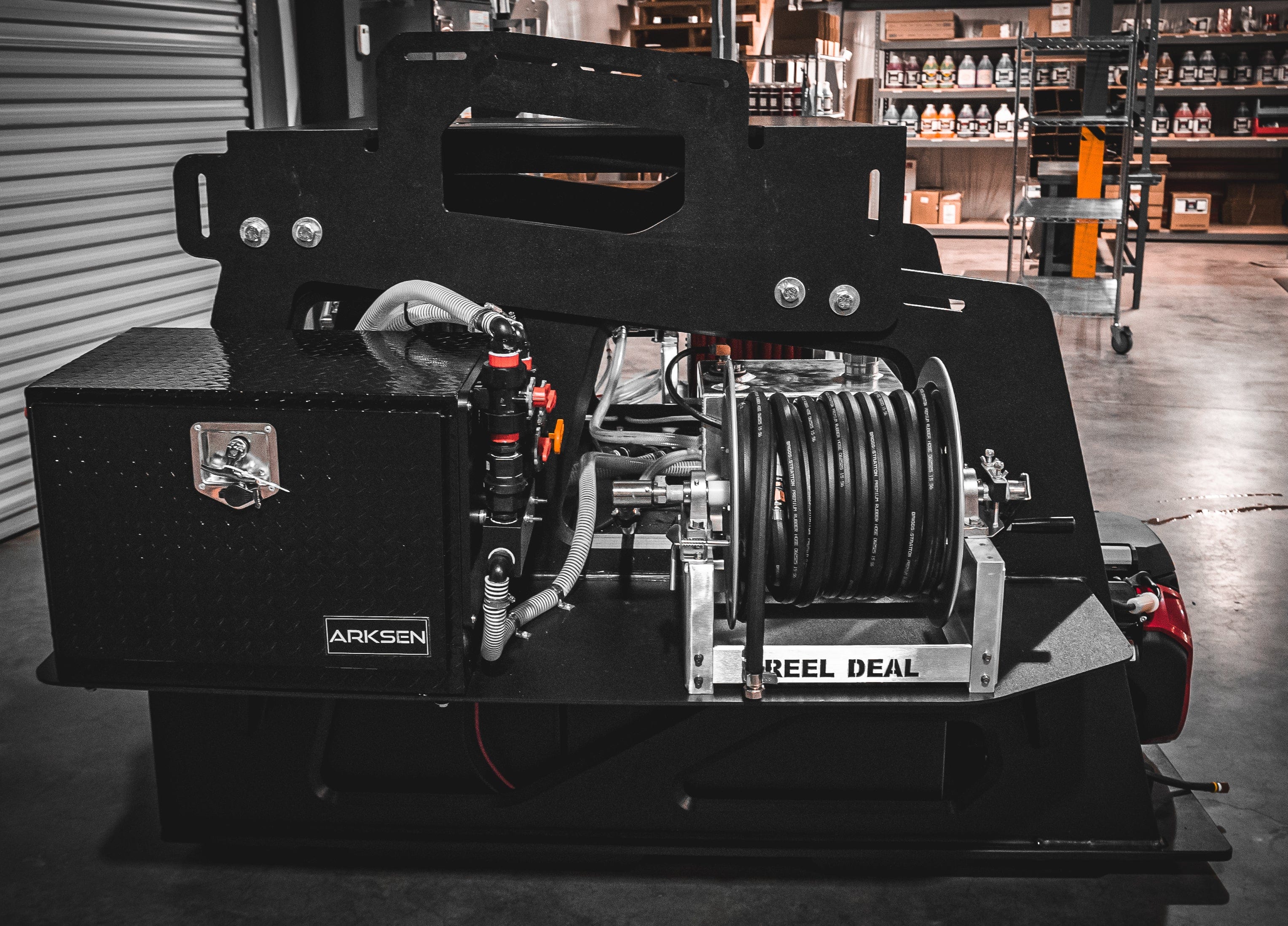Cleaning operations in industrial settings never slow down. Pressure washing skids have become go-to equipment across warehouses, manufacturing plants, and logistics centers.
You get a pump, engine, and water tank mounted on one portable frame. Move it wherever the work needs doing.
Price shopping won’t tell you the whole story here. A distribution center hosing down loading docks needs different specs than a food plant sanitizing equipment.
Finding where to buy a pressure washing skid is step one. Knowing what specs actually fit your operation comes next.
Figure Out Your Operational Capacity
Your facility has its own cleaning rhythm. Matching skid specs to real-world usage keeps you from overspending or underbuying.
Track Your Daily Cleaning Hours
Pull out a calendar and log your pressure washing hours for one week. Take that number and multiply it by four for monthly usage.
Commercial engine skids handle 40 to 60 hours weekly without breaking a sweat. Industrial-grade models push 60 to 80 hours per week. Your usage pattern points you toward the right category.
Know Your Pressure Requirements
PSI needs change based on what you’re cleaning. Vehicle washing runs fine at 2,000 to 2,500 PSI. Concrete cleaning bumps up to 2,500 to 3,500 PSI territory. Paint removal and heavy buildup need 3,500 PSI or more. Look at your toughest regular job and match the pressure range.
Check Your Flow Rate Needs
GPM determines cleaning speed more than people realize. Higher flow gets the job done faster and rinses more thoroughly. A 4 GPM unit finishes in half the time compared to a 2 GPM model at identical PSI. Think about your target completion time for typical tasks. That gives you the GPM sweet spot.

Pick the Right Engine Type and Power Source
Your engine choice ripples through everything. Reliability, maintenance bills, and fuel consumption all tie back to this decision.
Gas engines deliver serious power without killing your budget upfront. They run anywhere since you’re not hunting for outlets. Honda and Kohler dominate the commercial space for good reason. Parts availability stays solid, and reliability holds up. Upfront costs stay lower, but fuel expenses add up over months.
Electric motors eliminate trips to the gas pump and cut maintenance time. Noise levels drop, and you avoid exhaust fumes entirely. Indoor operations often require electricity because of air quality regulations. Power output hits limits, though, and your electrical system needs proper voltage and amperage. Not every facility can support industrial electric skids without upgrades.
Diesel engines win on fuel economy when you’re running high volumes. Torque output stays stronger at lower RPMs compared to gas. Initial investment hurts more, but longevity makes up for it with proper maintenance. Multi-shift facilities often go diesel once they calculate total ownership costs.
Think About Portability and Mounting Options
Moving your skid around affects how much you actually get done each day. Frame design matters based on how your facility operates.
Wheel-mounted skids roll smoothly across flat concrete. Four pneumatic tires beat two-wheel setups on rough ground. Tire size needs to match your floor conditions. Bigger tires clear debris and handle cracks without getting stuck.
Trailer-mounted units shine when you work across multiple sites. Tow them between facilities or park them in storage between jobs. The Occupational Safety and Health Administration requires proper lighting and safety chains for road use. State registration kicks in above certain weight limits, too.
Forklift-compatible frames bring flexibility to sprawling warehouse operations. Fork pockets mean you reposition heavy skids in minutes instead of struggling manually. Weight goes up with these frames, but you gain speed and convenience. Moving between distant cleaning zones becomes simple.

Look at the Water Supply and Tank Capacity
How you handle water separates smooth operations from constant frustration. Supply method choices affect both speed and costs.
Buffer Tanks for Independence
Buffer tanks cut the cord from water sources while you work. A 100-gallon tank runs for 25 minutes at 4 GPM before refilling. Double that to 200 gallons, and your runtime doubles too. Measure the typical job duration first, then size your tank accordingly.
Direct Feed Systems
Direct feed hooks straight into building water lines. Fixed location cleaning suits this setup perfectly. Tank filling disappears from your routine, but so does easy mobility. The Environmental Protection Agency pushes pressure regulators on these connections. Pump seals last longer when you protect them from pressure spikes.
Float Tanks and Filtration
Float tanks maintain steady water levels automatically. Your supply line refills the tank while you spray. Mobility stays intact, and runtime extends significantly. Costs run higher, but downtime shrinks in busy facilities.
Filtration protects your pump investment. Inlet screens stop debris before it reaches sensitive parts. Quality systems use sediment filters rated 50 microns or finer. Seals, valves, and nozzles wear more slowly when water stays clean.
Check Durability and Warranty Coverage
Build quality determines whether your skid lasts years or breaks down constantly. Initial price tags hide long-term value.
Frame Material Choices
Powder-coated steel fights rust better than basic paint jobs. Stainless steel handles chemical exposure without corroding, but costs jump substantially. Aluminum cuts weight, but dents show up more easily than steel. Your typical working conditions should drive this choice.
Component Brand Quality
Name-brand pumps from Cat or General cost more initially. Parts support and reliability make that premium worthwhile. Generic pumps look cheaper on paper, but replacement parts become treasure hunts. Engine, hose, and fitting quality follow the same pattern. Shortcuts here create expensive problems later.
Warranty Terms and Service Access
Warranty length varies wildly across manufacturers. One to two years covers most commercial units as standard. Extended coverage on engines and pumps shows up with some brands. Labor coverage and parts availability hide in the fine print. Companies that fold within two years make warranties worthless.
Service networks determine repair speed when things break. Regional service centers get you running faster than shipping units across the country. Check for authorized repair shops in your area before purchasing. Unauthorized repairs void many warranties completely.
Get Ready to Make Your Choice
Washing skids represent serious money in equipment spending. Picking right improves efficiency and cuts long-term costs. Picking wrong creates headaches and limits what you can handle.
Write down your actual requirements before shopping. PSI needs, runtime hours, and mobility demands all matter. Stack these numbers against real manufacturer specs instead of marketing fluff. Request quotes from multiple suppliers and verify component brands on every model.
Your operation deserves equipment that matches daily reality. Compare thoroughly before committing funds. Research time pays back through reliable performance over years of use. You’re stuck with this choice for a long time, so get it right.







